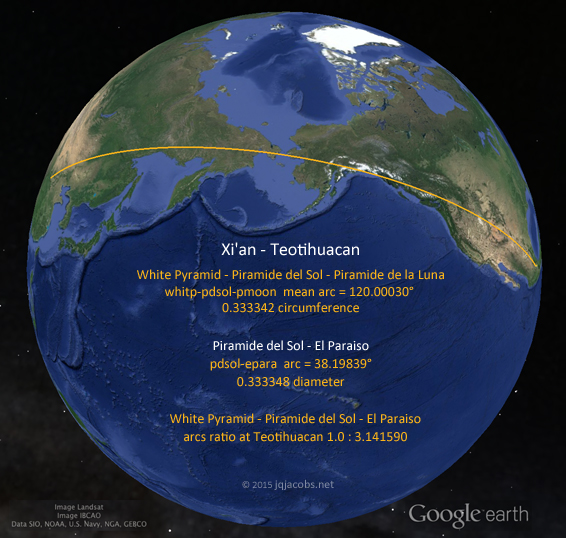Welcome to DU!
The truly grassroots left-of-center political community where regular people, not algorithms, drive the discussions and set the standards.
Join the community:
Create a free account
Support DU (and get rid of ads!):
Become a Star Member
Latest Breaking News
General Discussion
The DU Lounge
All Forums
Issue Forums
Culture Forums
Alliance Forums
Region Forums
Support Forums
Help & Search
Latin America
Related: About this forumGreat information for those of us who wouldn't miss observing Pi Day:
Happy Pi Day 2015
3.14.15 9:26:53... - Today seems perfect for reporting research results related to pi. Yes, I've dug up some pi to report. Well, today is not your usual Pi Day holiday. Some are calling it Super Pi Day, others proclaim the Pi Day of the Century. So, no ordinary discovery of pi in prehistory will do today, great accuracy is a must, at least 3.14159. Of all the times I've uncovered pi as an archaeologist, this one certainly wins one pi contest, accuracy:
[center]White Pyramid - Pyramid of the Sun - El Paraiso
Teotihuacan to White Pyramid arc = earth's circumference ÷ 3
Teotihuacan to El Paraiso arc = diameter ÷ 3
Arc distances ratio atop the Pyramid of the Sun:
1.0 : 3.14159[/center]
Teotihuacan to White Pyramid arc = earth's circumference ÷ 3
Teotihuacan to El Paraiso arc = diameter ÷ 3
Arc distances ratio atop the Pyramid of the Sun:
1.0 : 3.14159[/center]
[center]

[font size=1]
Examine the result in Google Earth:
http://www.jqjacobs.net/kml/pi_pyramids.kml [/font][/center]
Coincidence, when random, can explain pi recurring in research results, in archaeology and elsewhere. Coincidence does not easily explain this finding, with too many coincidences in one relationship set. Three monuments, each a center of a civilization, each the largest center of civilization on a continent (albeit only two of the three at once), and each monument ranking in some largest category for its time and place. This is not a comparison of cities, rather the very centerpoints of their largest monuments present the precise ratio of pi.
Accuracy is one way to assess the probability of coincidence. On the global scale, accuracy is an applicable method. The monument center-on-center arcs precisely express the ratio one to pi. Precise, in this case, means as accurate as the method of determining the coordinates. Using my research application (spherical trigonometry), the shorter arc result is within 4m of precisely equaling the larger arc divided by pi. El Paraiso IV, the largest mound at El Paraiso, is over 400m long and the four meters of inaccuracy is in relation to one-third of earth's diameter, well over 4,000,000 meters. In other words, the prehistoric pi ratio is accurate to one part in one million. My math result using the coordinates listed below is 1.0 : 3.141590. Quite an accurate slice of pi, besting anything in history written with little letters during the same time.
[center]

[font size=1]
Piramide del Sol, view is the westward side facing the central avenue.
Teotihuacan, the Largest Prehistoric City in the Americas
http://www.jqjacobs.net/mesoamerica/teotihuacan.html[/font][/center]
Far more valuable information brought together at this link. It's one to keep:
http://www.jqjacobs.net/blog/
Anthropology:
http://www.democraticunderground.com/12292085
InfoView thread info, including edit history
TrashPut this thread in your Trash Can (My DU » Trash Can)
BookmarkAdd this thread to your Bookmarks (My DU » Bookmarks)
1 replies, 546 views
ShareGet links to this post and/or share on social media
AlertAlert this post for a rule violation
PowersThere are no powers you can use on this post
EditCannot edit other people's posts
ReplyReply to this post
EditCannot edit other people's posts
Rec (1)
ReplyReply to this post
1 replies
 = new reply since forum marked as read
Highlight:
NoneDon't highlight anything
5 newestHighlight 5 most recent replies
= new reply since forum marked as read
Highlight:
NoneDon't highlight anything
5 newestHighlight 5 most recent replies
Great information for those of us who wouldn't miss observing Pi Day: (Original Post)
Judi Lynn
May 2015
OP
niyad
(113,055 posts)1. k and r for that fascinating information.